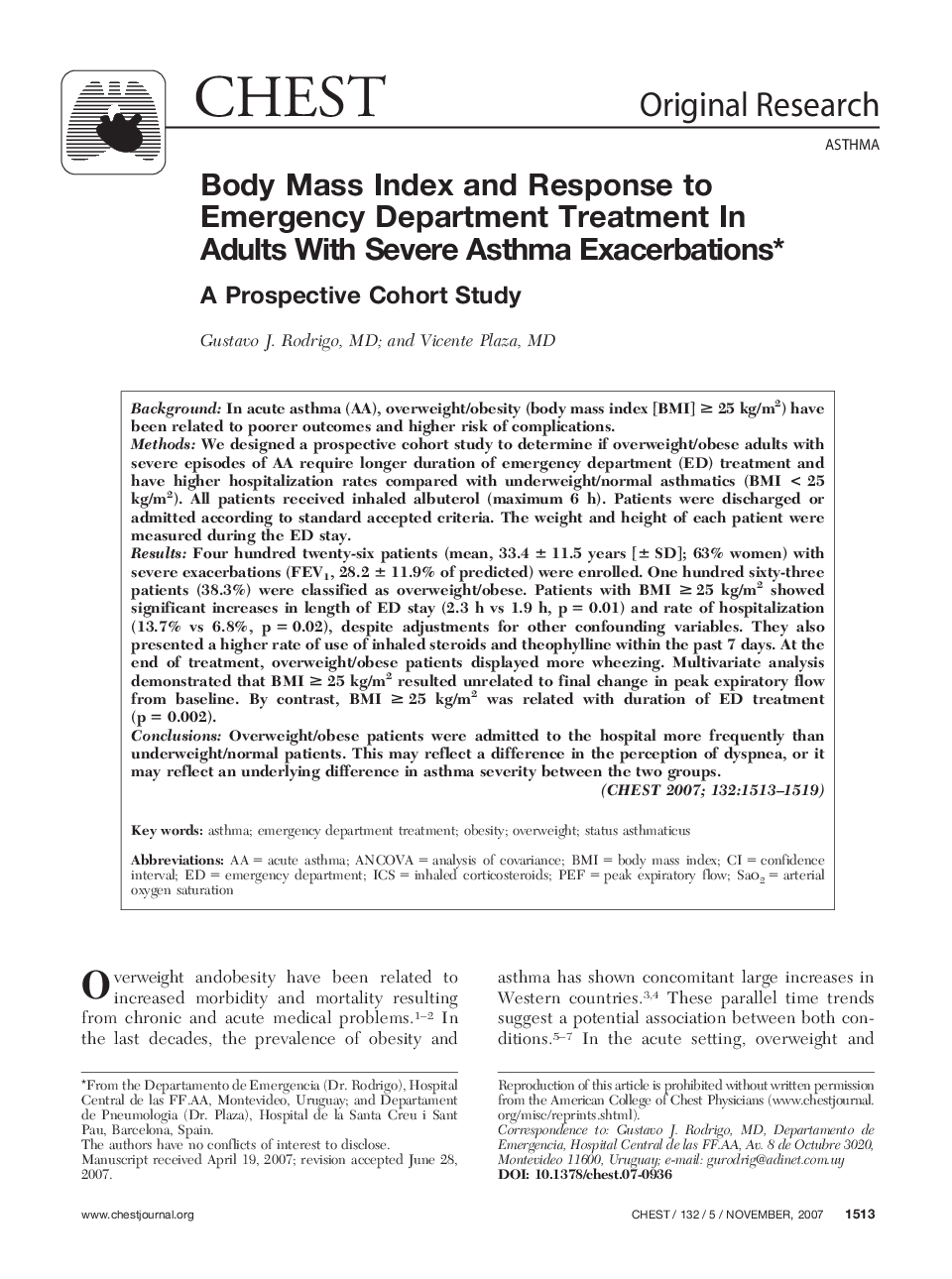| Article ID | Journal | Published Year | Pages | File Type |
|---|---|---|---|---|
| 2904426 | Chest | 2007 | 7 Pages |
BackgroundIn acute asthma (AA), overweight/obesity (body mass index [BMI] ≥ 25 kg/m2) have been related to poorer outcomes and higher risk of complications.MethodsWe designed a prospective cohort study to determine if overweight/obese adults with severe episodes of AA require longer duration of emergency department (ED) treatment and have higher hospitalization rates compared with underweight/normal asthmatics (BMI < 25 kg/m2). All patients received inhaled albuterol (maximum 6 h). Patients were discharged or admitted according to standard accepted criteria. The weight and height of each patient were measured during the ED stay.ResultsFour hundred twenty-six patients (mean, 33.4 ± 11.5 years [± SD]; 63% women) with severe exacerbations (FEV1, 28.2 ± 11.9% of predicted) were enrolled. One hundred sixty-three patients (38.3%) were classified as overweight/obese. Patients with BMI ≥ 25 kg/m2 showed significant increases in length of ED stay (2.3 h vs 1.9 h, p = 0.01) and rate of hospitalization (13.7% vs 6.8%, p = 0.02), despite adjustments for other confounding variables. They also presented a higher rate of use of inhaled steroids and theophylline within the past 7 days. At the end of treatment, overweight/obese patients displayed more wheezing. Multivariate analysis demonstrated that BMI ≥ 25 kg/m2 resulted unrelated to final change in peak expiratory flow from baseline. By contrast, BMI ≥ 25 kg/m2 was related with duration of ED treatment (p = 0.002).ConclusionsOverweight/obese patients were admitted to the hospital more frequently than underweight/normal patients. This may reflect a difference in the perception of dyspnea, or it may reflect an underlying difference in asthma severity between the two groups.
